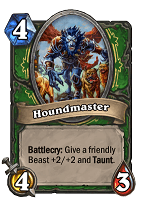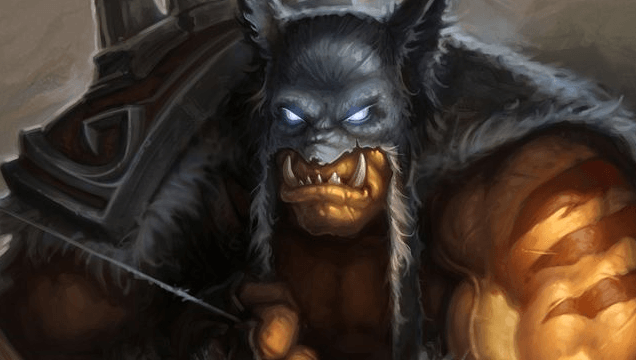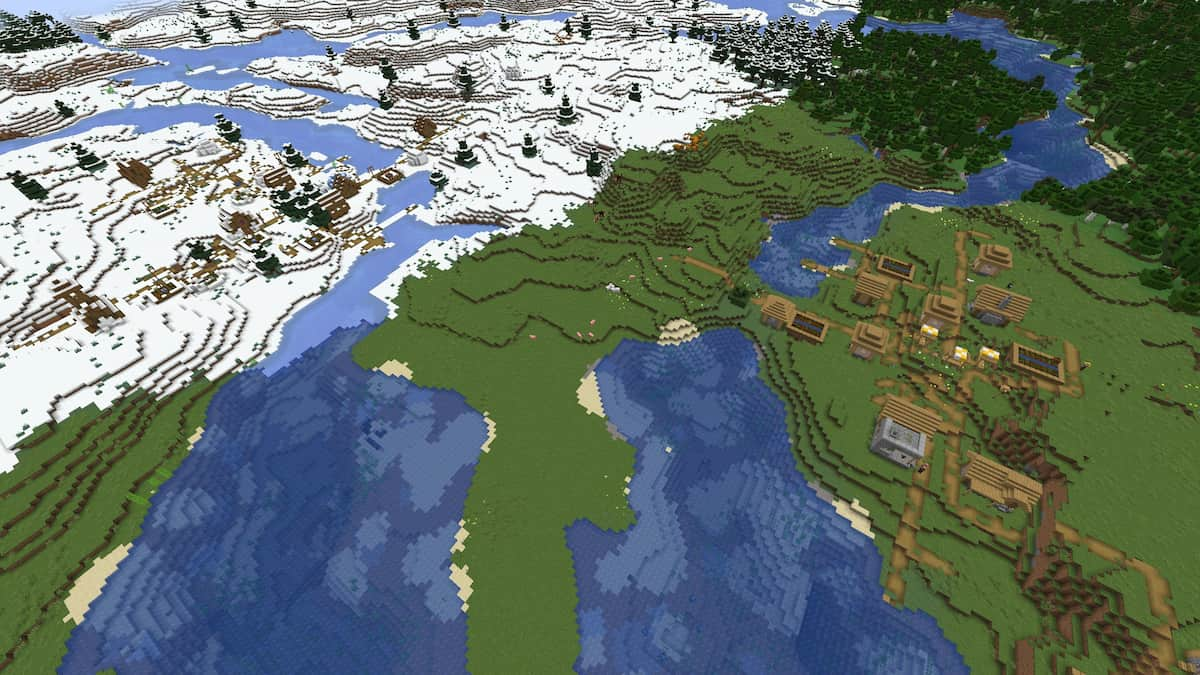With Hearthstone’s Grand Tournament expansion in full swing, it’s a great time to get into the game. Whether you’re a beginner or somebody who hasn’t played since beta, this guide will take you through the basics of playing an aggressive hunter, complete with a decklist drawn from Hearthstone’s basic card set!
This hunter decklist comes from notable Hearthstone player Trump. Where our mage guide focused on control, this hunter guide is going to explore the opposite side of the coin — aggression.
The deck assumes that you’ve reached at least level 10 as a hunter — which can be done by playing against the innkeeper (AI), or playing matches against human opponents — best done through the Casual play option before setting foot in Ranked.
Aggression? Is that what “face” refers to?
Absolutely! Aggressive play tactics preference striking your opponent’s hero, or their “face”, directly. This is often done by flooding your board with lower cost minions to build and maintain pressure, and only reacting to major threats from your opponent’s side. The hunter’s Hero Power, Steady Shot, supports this kind of play — it does two damage and can only target the enemy hero. Your goal when playing aggressively is to deal as much direct damage as possible and end the match quickly.
The Decklist
 Right away, you’ll notice that nothing in this list costs more than four mana. The low cost of the cards means that you’ll be able to consistently use Steady Shot to apply pressure, while still playing one or more creatures each turn.
Right away, you’ll notice that nothing in this list costs more than four mana. The low cost of the cards means that you’ll be able to consistently use Steady Shot to apply pressure, while still playing one or more creatures each turn.
As touched on above, it’s important to end the match quickly. This deck simply cannot keep up in the later parts of any game, when your opponent will have the mana to bring out some of their heavy-hitters or taunters. That said, it’s important to make smart trades between yours and the enemy’s minions. Consider things from your opponent’s point of view: what are they most likely to do with their minions next? Is there anything dangerous of yours that can be taken out in a single hit? Can you defeat a minion without losing one of your own? Going through these scenarios on the fly is something you’ll develop through practice and experience. Remember that this deck’s goal is aggression, so play boldly!
Minions
Unsurprisingly, this deck’s balance is weighted heavily in favor of creatures — twenty creatures total are included, with ten spells supporting them. A lot of these creatures will become pretty familiar to you as you make your way through these guides — they’re cost-efficient cards that fill their niches well. These sturdy, familiar cards all make an appearance in this basic hunter deck: Bloodfen Raptor, Shattered Sun Cleric, and Chilldwind Yeti.



Now, on to the new kids.
This basic hunter deck includes a couple of cards with the Charge trait, as well as the potential to summon one with the Animal Companion spell. Bluegill Warrior is a two mana 2/1 that can make some nice momentum-halting trades after first swinging at your opponent’s face. Wolfrider, at 3/1, is perfect for getting rid of an early taunt from an Ironfur Grizzly or stopping a Priest’s Shadowboxer, whose ability allows it to deal damage to your minions whenever something is healed.



The Murloc Tidehunter and Razorfen Hunter each summon a 1/1 minion of their own when played. The Razorfen Hunter’s summoned is especially important, as it’s classified as a beast. Minions can either be neutral or fall into one of six types, labelled at the bottom of their card — beast, demon, mech, murloc, pirate, or totem. Cards classified as beasts can be buffed by the Houndmaster, one of the hunter’s basic class cards. Playing it the turn after your Razorfen Hunter means that you take advantage of the +2/+2 buff and attack immediately with the boar for a small burst of damage. Alternatively, the Houndmaster synergizes well withOasis Snapjaw, whose already beefy health makes it a great candidate for a taunt.



Spells
The aggressive nature of this hunter deck means that there’s not much room for crowd control spells or removal, unlike the mage deck. Still, there’s a couple of options available for both mitigating threats and piling on damage.
Multi-shot only targets enemy minions, and deals 3 damage to two of them, chosen at random. It’s best used early on, when only two minions are on the board, for obvious reasons. Arcane Shot, causing 2 damage for one mana, can be played aggressively to help get you over the line near the end of the game. Aggressive use of spells like this is normally a mortal sin, but the hunter aggro deck is so hyper-focused on damage that it’s viable. It can also be used in conjunction with Hunter’s Mark to remove a taunting or threatening minion, as Hunter’s Mark reduces a minion’s health to 1.



Your win condition with this deck is aiming to play Kill Command optimally. Optimal in this case means with its bonus damage intact. With a beast on your board, Kill Command deals 5 damage to a target (otherwise, it deals 2 damage). If you haven’t got a beast, playing Animal Companion will summon one of three beasts at random for you: Misha, a 4/4 bear with taunt; Leokk, a 2/4 hawk who will buff all your minions with +1/+1; or Huffer, a 4/2 boar with charge. All three are mana-efficient and capable of influencing the game in your favor.


Upgrades
Once you’ve spent some time playing and learning from this basic hunter deck, you’ll no doubt be itching to upgrade it. Before you get started, take a quick look over our Beginner’s Deck Building Guide for some tips. The most important part is to always keep trying and refining your deck through play. A string of losses can be frustrating, but it’s also a good sign that you may need to slow things down and consider your plays a little more carefully before altering your deck.
The Grand Tournament has introduced a number of excellent cards for the hunter — both neutral and class-specific. Power Shot, which trades a point of damage from Multi-shot for wider coverage and a reduced cost, is a personal favorite. Due to the Hunter’s frequent use of its Hero Power, the Kvaldir Raider is also a solid choice for an aggressive deck.


Quick Shot is a great addition to an aggro deck like this, replacing an Arcane Shot and perhaps a Murloc Tidehunter. It gives you a little card draw on an empty hand — and as this deck tends to burn through your cards quickly, you’ll be needing it. Unleash the Hounds summons a set of 1/1 beasts with Charge, and has excellent synergy with Mukla’s Champion — a 5 mana minion whose Inspire will buff your minions with +1/+1.



Keep your River Crocolisks, as they make great targets for the Houndmaster’s buff. Your Bloodfen Raptors and Bluegill Warriors can potentially be replaced by the Haunted Creeper and Harvest Golem — two excellent, low-cost cards whose Deathrattles summon additional minions.



The Hunter class also has a number of secrets available to use. Secrets are low-cost cards that once played, will only activate when certain conditions are met. The inclusion of secrets in this deck would pull it more towards a control-themed deck, but that lies outside the scope of this guide. Try them out, and see what works for you!
Conclusion
The aggressive playstyle of this Hunter deck is a great place to start honing your judgment when it comes to trading minions and swinging for direct damage. Excellent cards and an easy to learn, hard to master playstyle cement it as one of the most popular classes in Hearthstone.







Published: Sep 27, 2015 05:43 am